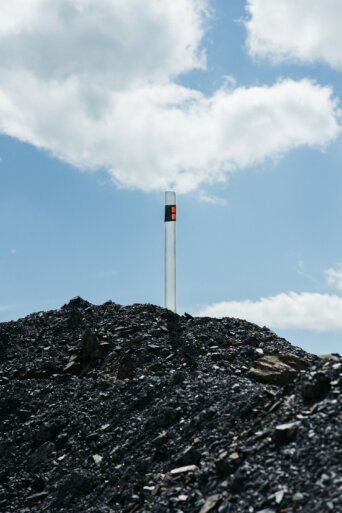- About
- Topics
- Picks
- Audio
- Story
- In-Depth
- Opinion
- News
- Donate
- Signup for our newsletterOur Editors' Best Picks.Send
Read, Debate: Engage.
| topic: | Radioactive Pollution |
|---|---|
| located: | Ukraine, Russia |
| editor: | Abby Klinkenberg |
The spectre of nuclear disaster is haunting Russia’s ongoing, brutal invasion of Ukraine. It hangs over global news coverage in the form of Cold War gravity and has revealed itself explicitly at various points over the past weeks: predominantly in the forms of weaponry - as Russian President Vladmir Putin has dangled the threat of its nuclear warheads - and accident - as a fire broke out at Ukraine’s largest nuclear power plant due to Russian shelling. Little has been said, however, of the less explosive nuclear threat caused by negligence at Ukraine’s coal mines in the Donbas region that threatens the groundwater not only of Ukraine, but also of wider Europe.
In 1979, as part of its “Peaceful Nuclear Explosions for the National Economy” program, the Soviet Union detonated a 0.3 kiloton bomb 903 metres down in the Yunyi Komunar (“Yunkom”) mine in the Donbas region of today’s Ukraine. The blast was “peaceful” in intention: it was merely meant to facilitate mining by freeing methane gas. The nature of the explosion was kept secret: workers returned to the newly radioactive mine the very next day - they would continue to do so for another 23 years, until 2002 when it was closed as “unprofitable.” This story is frankly wild in and of itself, but the 20 years since have unravelled in such a way that portends even wider ecological disaster.
Underground mines cannot just be closed and abandoned: they “soon fill with rising groundwater, which then becomes contaminated with heavy metals” - and, in the case of the Yunkom mine, radioactivity - “that can pollute the water table.” Initially, the Ukrainian government took up the task of pumping the toxic and radioactive mine water out of Yunkom to ensure that its contaminants did not spread. However, with the onset of the Russian-backed separatist movements in the Donbas in 2014, these plans soon fell apart: “in 2018, the so-called Donetsk People’s Republic… ceased pumping operations” due to a lack of financing, “with infrastructure sold off for scrap metal.” In the four years since this decision, floodwaters have continued to rise in the Yunkom mine, which “could be months from spilling toxic, radioactive wastewater into the surrounding land, rivers, and drinking water supplies.”
This impending environmental disaster is only one of many ongoing worst-case-scenario narratives coming out of Ukraine, but is one that bears the burden of a timescale potentially spanning thousands of years. That any prevention or mitigation operations would be incredibly expensive and need to navigate a ravenous warzone only complicate matters further.
The radioactive Yunkom mine is only one of the 220 coal mines in the Donetsk Coal Basin, “14 of which are in drainage mode, 39 of which are flooding, and 70 of which are in the process of closure,” according to Ukrainian human rights NGO Truth Hounds. Even when they are not filled with nuclear waste, flooded mines pose a risk to public health in terms of heavy metal contamination, including from mercury, lead, and arsenic. According to a senior hydrologist at the National Academy of Sciences of Ukraine, “ninety percent of the water sampled outside of the centralised supply system [in the Donbas] is not drinkable.” A 2019 report by Ukraine’s National Institute for Strategic Studies indicated that pollution from flooded mines in the Donbas poses an “urgent threat” to at least 300,000 people.
With Russia’s recent invasion of Ukraine, the coal mines in the Donbas - radioactive and otherwise - are poised to fall into increasingly perilous states of neglect, further threatening the groundwater of the region and the country at large.

